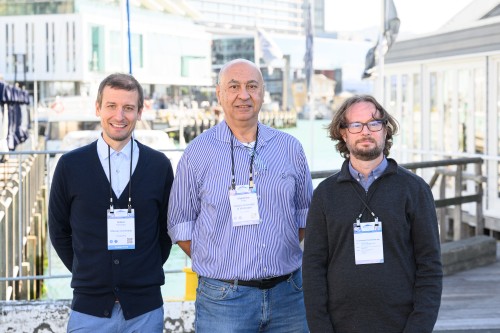Remote sensing conference finds opportunities for NZ
Hosting the Machine Intelligence for GeoAnalytics and Remote Sensing (MIGARS) conference has already resulted in new research, new talent and new opportunities for early career researchers in New Zealand
MIGARS, New Zealand’s first-ever international remote sensing/earth observation conference, took place 8-10 April at Shed 6 Queens Wharf in Wellington. It attracted nearly 170 attendees from around the world.
The conference was brought to the country by Gabor Kereszturi, Associate Professor at Massey University, Alejandro Frery, Professor at Victoria University of Wellington, and Matthew Wilson from the University of Canterbury, with the support of Tourism New Zealand’s Conference Assistance Programme.
Remote sensing is an area of exponential growth worldwide, with hundreds of new airborne, satellite and ground-based sensors deployed each year to capture new data. It’s applications in geoscience alone range from volcano mapping, monitoring landslides, post-disaster recovery and the detection of erosion.
“The conference was an outstanding opportunity for students, researchers, professionals and governmental delegates to learn state-of-the-art solutions, present challenging problems, and establish new partnerships,” Frery says.
Hosting the event has already brought benefits for New Zealand. Frery has started a new research project with CSIRO in Australia thanks to connections made at the conference, and a delegate from Japan interested in his presentation is now exploring doing a PhD at VUW.
“And that was just for me! I’m sure many new research opportunities have started thanks to MIGARS.”
One third of the attendees were graduate students, and Frery says the Young Professionals’ Session was extremely successful.
“We had a day of activities interacting with experienced professionals from a diversity of backgrounds – academia, private, companies, government.
“It was a great opportunity for those young professionals to talk to all possible aspects of their future careers. For the companies, attending, they had probably the best audience for headhunting. Plus, the whole event was a very good advertisement for the work being done across New Zealand universities in this area.”
Kereszturi adds: “Earth Observation and associated analytics is a new emerging tool that crosscuts multiple applications. MIGARS has been a successful stepping-stone for a more connected Earth Observation community in New Zealand.”
Professor Frery and Dr Kereszturi have now built upon the success of MIGARS, winning the bid to host the International Geoscience and Remote Sensing Symposium (IGARSS) in 2028, bringing more than 1,800 delegates to Auckland.
Frery says: “We showed MIGARS participants that New Zealand is a beautiful place, that we’re doing interesting work in this field, and that it’s the perfect place for a big conference such as IGARSS.”
Are you interested in bringing an international geoscience conference to New Zealand? Learn more: https://gsnz.org.nz/news-and-events/tourism-new-zealand-conference-support/

Gabor Kereszturi, Alejandro Frery and Matthew Wilson
“The conference was an outstanding opportunity for students, researchers, professionals and governmental delegates to learn state-of-the-art solutions, present challenging problems, and establish new partnerships”.
